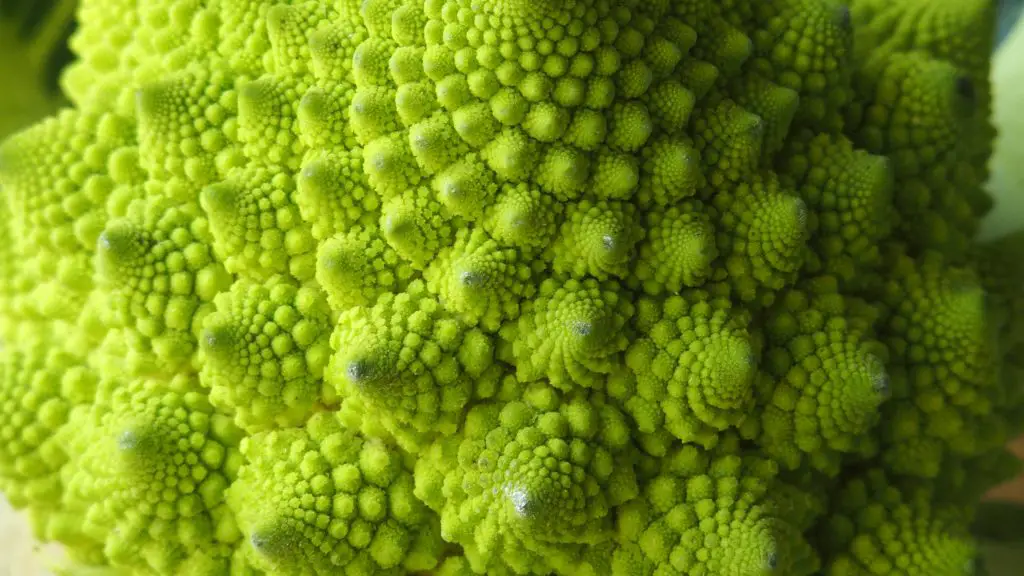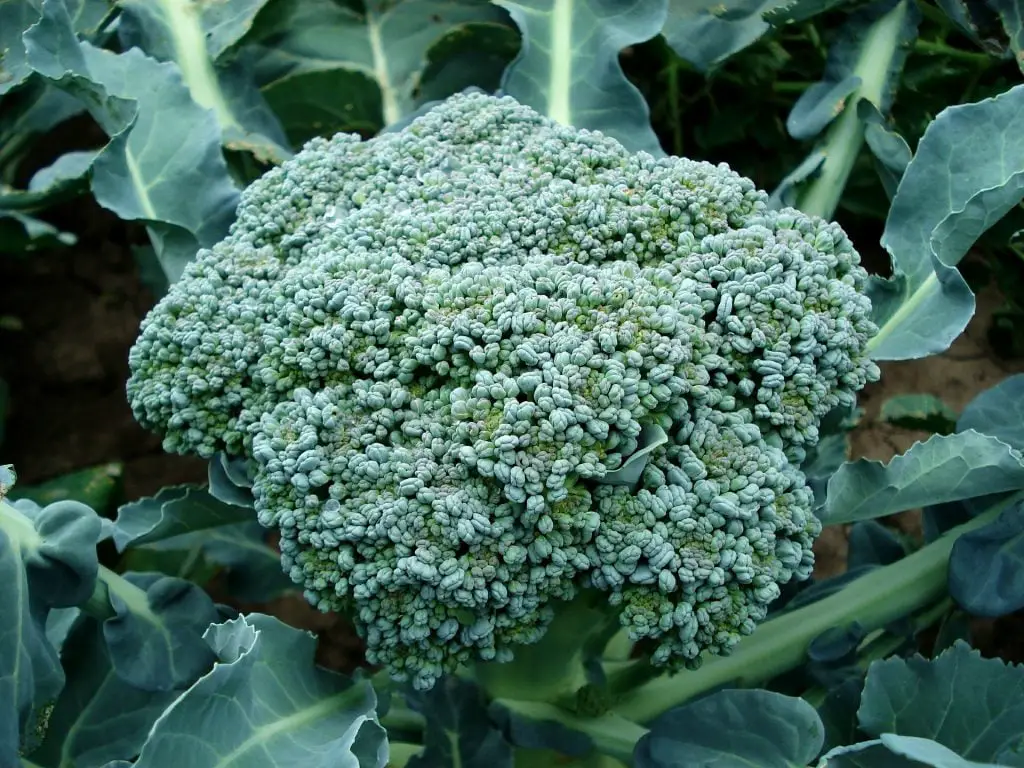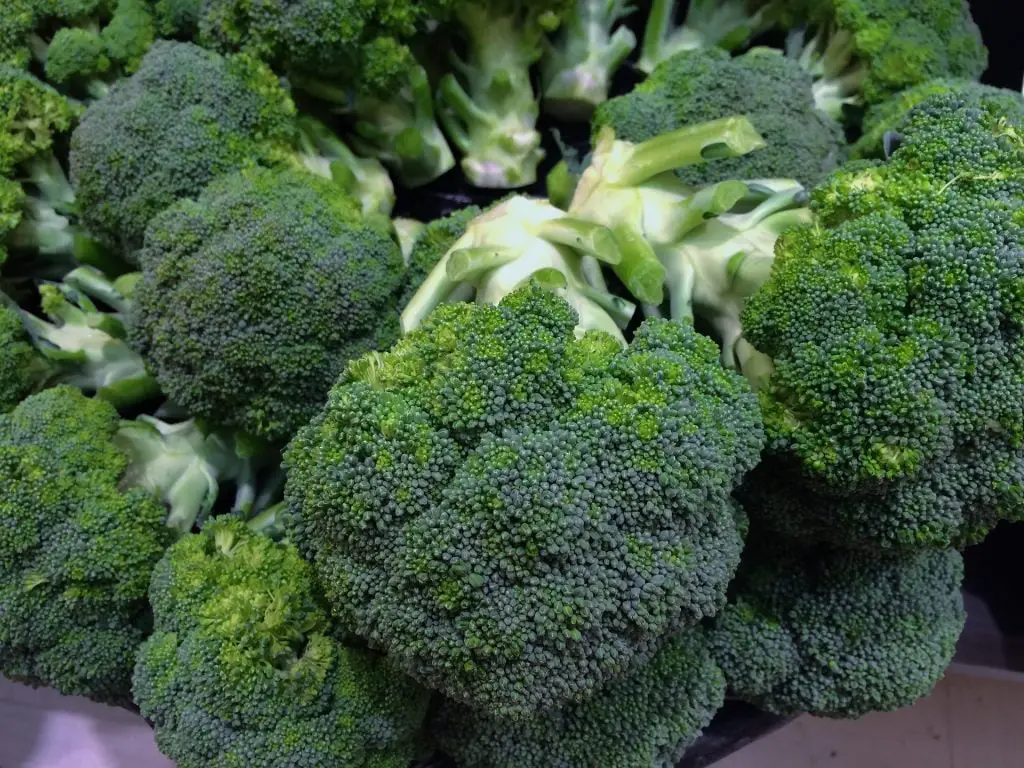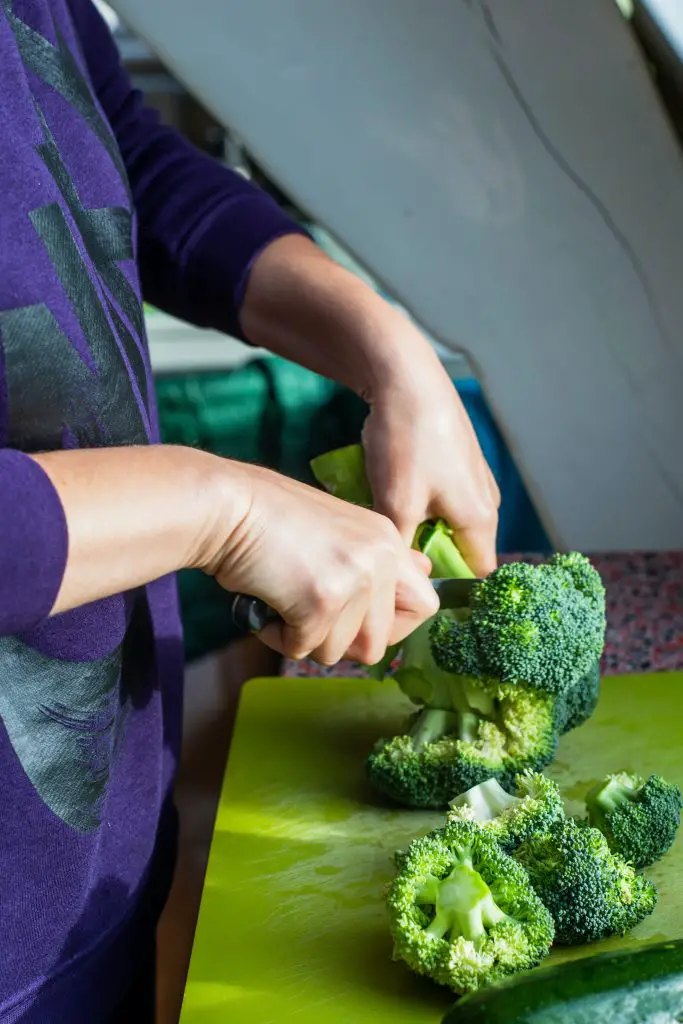How Many Broccoli Heads Grow On One Plant? Broccoli is one of the most popular winter vegetables eaten around the world. This popularity has occurred because it is a relatively easy vegetable to grow compared to its closest relative, Cauliflower, and is available for much of the year. So how much can you get out of a plant?
Most varieties of Broccoli plant produce one primary head per plant that is typically around 8 ounces (225 g) in weight. However, an exception to this is, Sprouting Broccoli, does not produce a primary head instead it produces a number of small florets.
The most common type of Broccoli, Calabrese, is grown commercially in many countries and represents the vast majority of production. The reason for this popularity is because the size of the plant is significantly smaller than the Romanesco varieties making it more cost-effective to produce.
However, for home gardeners, the other advantage of Calabrese varieties is that apart from producing the primary head the plant will also produce a number of smaller florets on the side shoots of the plant. These smaller florets tend appears later than the main head extending the harvest period.
However, the other type of Broccoli, Romanesco, which is less well known, produces only a single head and no side shoots. This variety is generally preferred for its firmer texture and flavor, however, this type is generally only found at farmers’ markets because of the additional costs associated with producing this type of Broccoli.
The Romanesco form is easily recognizable because it has a bright lime green color with distinctive spiral patterns. See the photograph below.

Having grown both types as a home gardener I would recommend growing the Calabrese type simply because a significantly larger crop can be produced with these varieties. Calabrese varieties are generally planted 16 inches apart whereas Romanesco varieties need to be planted around 2 ft apart. The difference in spacing results in a 50% increase in the number of plants that can be fitted into the same space.
Another very useful form of Broccoli is Sprouting Broccoli as it can be overwintered to produce an early spring harvest. This is useful for filling the “hungry gap” in early Spring when many other vegetables are not yet available. These plants grow throughout the Winter producing high-quality florets if exposed to temperatures below 10°C (50° F), for an extended period of time. To read more about the different types of Broccoli click here.
How To Grow Broccoli
Broccoli is a traditional winter vegetable that prefers to be grown in the cooler months of the year, as it has a tendency to set seed if it flowers in hot conditions. To avoid this it is best to start the plant either in Late Winter/Early Spring or in Late Summer/Early Autumn. How late in the season that seeds can be planted is dependent upon your local climate.
Broccoli is a hardy, frost tolerant plant that will tolerate temperatures as low as -2°C (28°F) or a little lower if the plants are protected with row covers. If you are buying a row cover it is important to ensure that it is relatively tall as Broccoli can get reasonably tall, 1 to 2 ft. The one we recommend is the Growsun Garden Tunnel Plant Cover which is shown in the picture below.

However, it is important to note that if you want to ensure that you have fresh Broccoli during the Winter you need to ensure that you plant early enough so that the Broccoli is approaching maturity when the cold weather arrives. This will allow the developed Broccoli head to sit during the winter and be picked as required. To learn how to calculate the precise planting date click here.
If you miss the planting window for a Winter harvest you will find that the plant will sit in the garden through winter and only flower when the weather begins to warm up in Spring. However, if you want to have a continuous harvest of Broccoli it useful to sow at different times.
To maintain a continuous harvest I personally plant Broccoli 3 times a year, the main crop in late Winter which is used for picking fresh Broccoli in late Spring, and freezing for the period in which Broccoli is unavailable. A smaller crop is planted in late summer, for a Winter harvest and this is followed shortly afterward with a third sowing in Autumn for an early spring harvest.
When starting Broccoli plants off they can be established either by direct sowing into soil or in seed trays. My personal preference is to sow into seed trays because seeds can be started earlier inside in Winter and in Summer it reduces the time the plant spends in the garden allowing other things to be grown. Additionally, storing the trays inside makes it easier to protect the young seedlings from attack by slugs and snails.

When sowing seeds in the trays it is best to use a specialized seed raising mix which can be purchased on Amazon. The seeds should be planted at a depth of 1 to 2 cms (0.5 inches) in the seed raising mix. If you live in a cold region and are planting in early Spring it is advisable to store the seedling trays in a warm place inside or use heated propagations trays. They are relatively inexpensive to purchase click on the link to see the current price on Amazon.
If you need to buy seeds and live in the UK try visiting Thompson & Morgan as they have a broad range of seeds available. In the US try visiting Seed for Generations or St Clare Seeds both companies are family-owned businesses that specialize in Heirloom Seeds.
Once planted the seedlings should take around 4 to 6 weeks to reach sufficient size to be able to be planted out in the garden. Transplanting of the seedlings should only occur when the temperature is greater than 5°C (41°F). When planting the seedlings out they should be spaced approximately 40 cms (16 inches) apart.
When seedlings are first planted out in the garden they are highly susceptible to attack from slugs and snails and will require protection in most cases. This protection can be in the form of commercial snail pallets, or a homemade remedy, such as coffee grounds and beer traps. The protection should be applied on the same day as the plants go in the ground because slugs and snails have been known to decimate a crop in a single night.
The garden soil for the seedlings should ideally be moist and rich in organic matter. The easiest way to prepare the soil is by using the “No-Dig” method. This required a layer, 2 to 4 inches (5 to 10 cm) thick of compost to be applied to the soil once a year. This application will supply adequate nutrients for the whole year and also act as a mulch that will suppress weeds. To read more about the advantages of this method click here.

Apart from the initial application of mulch and ensuring that the plants remain moist there is little other maintenance required for the plant. Broccoli heads can be harvested at any stage after they appear but it is best to wait until the head of the plant reaches the size of 2 fists.
However, in warmer weather, if there are any signs of the head beginning to separate or produce flowers it should be harvested immediately. The quality of the head quickly can deteriorate in warmer weather and is the reason why harvesting at the peak of Summer should be avoided.
Generally, it is best to harvest the Broccoli heads when they are at their best and then store them rather than wait until they are past their best.
How To Store Broccoli
If there is a need to store Broccoli in the short term it is ideally stored in a cool and moist place at a temperature below 4°C (40°F). In these conditions, Broccoli can be stored for one to two weeks.

However, if you really have a glut of Broccoli it may be frozen but it will require blanching prior to freezing. The process of blanching stops the enzyme activity within the Broccoli. Blanching is done by placing the Broccoli into boiling water, for a short period of time, to prevent the loss of flavor, color, and texture when frozen. If you are unfamiliar with how to blanch, the steps are provided below;
- Step 1: Wash the Broccoli and remove any leaves. Cut the Broccoli into smaller pieces. The size of the pieces should be the same as what you would use in a recipe as this will mean the Broccoli is ready to use when they are taken out of the freezer.
- Step 2: Blanch the Broccoli by bringing a large pot of water to boil. Fill a large bowl with ice water, just prior to starting the blanching process. Once the pot is boiling, add your Broccoli into the water. Cook for 2 minutes, then remove from the pot, and immediately plunge the Broccoli into the ice water to cool, for around the same amount of time as the blanching, and then drain thoroughly.
- Step 3: Prepare the Broccoli for freezing, Then Freeze. Pack all of your blanched Broccoli into plastic bags or a suitable container. Ensure each bag or container is labeled with dates.

